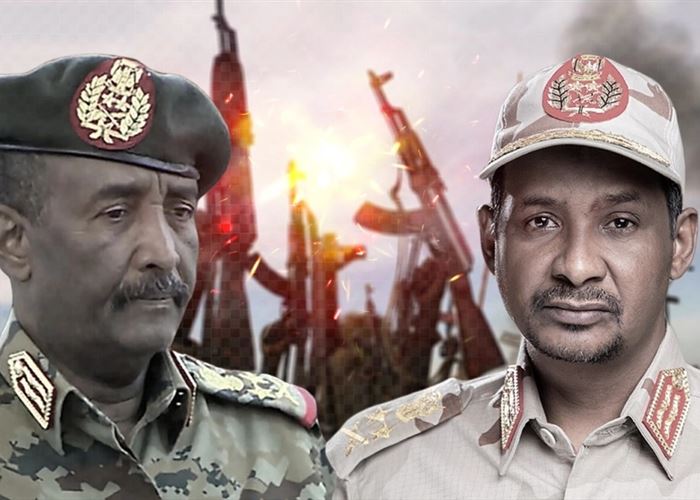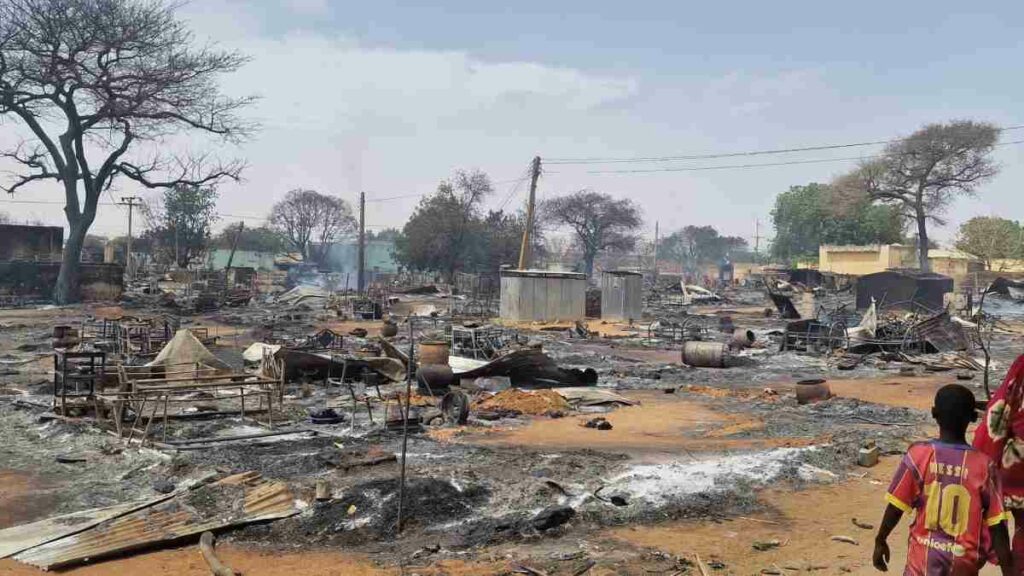There was no decisive decision and the confrontations expanded…This is how Sudan looked a year after the war

After a year of fighting that broke out in the Sudanese capital, Khartoum, there was no military decisiveness, the scope of confrontations between the army and the Rapid Support Forces expanded, the number of displaced persons and refugees doubled, and the humanitarian and economic conditions worsened.
The expansion of the security circle in Omdurman, the second largest city in the three capital, and some neighborhoods in Khartoum, and economic pressures, contributed to the adverse return of citizens from states to which they were displaced and neighboring countries in which they sought refuge.
Fighting erupted in Khartoum in mid-April, after weeks of tension following the insistence of the President of the Sovereignty Council and Army Commander Abdel Fattah Al-Burhan to set a time frame not exceeding two years to integrate the Rapid Support Forces into the army before signing a settlement agreement for a transitional period and forming a civilian government.
On the other hand, the Rapid Support Commander, Mohamed Hamdan Dagalo “Hemedti,” insisted on a period of no less than 15 years to integrate his forces, and his brother and deputy, Abdel Rahim Dagalo, called on Al-Burhan to hand over power to civilians “without back and forth” and bring forces and weapons from Darfur to Khartoum.
Military Chart
The fighting began in Khartoum with the deployment of the Rapid Support Forces over large areas, and it claimed to control 90% of them. After 11 months, the army switched from defense to attack and maintained its main headquarters and bases.
In recent weeks, the army has advanced in Omdurman from the north – which it still controlled – towards the city center, regained control of the radio and television headquarters, and is creeping south and west to expel Rapid Support from the neighborhoods in which it is deployed.
In Khartoum, the army controls the areas of Al-Shajara, Al-Hammadab, Gaza, and parts of Yathrib, Jabra, and Al-Lamap. The spread of Rapid Support has declined in the south and east of the city, while it is more widespread in the neighborhoods of Al-Azhari, Al-Salama, Soba, and South Al-Hizam
Regarding Khartoum Bahri, the army has launched a major military campaign since last March, achieving progress in the north of the city and heading south towards other areas to liberate them. The presence of the Rapid Support Forces is concentrated in the eastern Nile region up to the Soba Bridge, which connects the eastern Nile with Khartoum, and the army has no presence except in parts of Al-Ailfoun and the Hattab military base.

In late last October, the Rapid Support took control of Nyala, the capital of South Darfur state, Zalingei, the capital of Central Darfur state, El Geneina, the capital of West Darfur state, and El Daein, the capital of East Darfur state, following the army’s withdrawal from it, due to its forces being besieged for months and being cut off from supplies. The only thing left of the region under the control of the army is El Fasher, its political and administrative capital.
On December 18, the army withdrew from Wad Madani, the capital of Gezira State, the second largest state in the country after Khartoum, and began a major operation to retake it since dawn on Thursday, April 4.
Stumble in the conduct of the war
Military experts believe that there is confusion regarding the proper management of the war on the part of the army leadership, as there is no legal cover to declare a state of emergency, nor a strong and resolute war government that mobilizes the comprehensive forces of the state to achieve victory.
The same sources say that the army leadership did not benefit from the general mobilization that was launched spontaneously by popular will, so the authority was forced to follow it with words rather than actions, and without arming the popular resistance and employing it to the required extent. Recently, official voices began to question this resistance.
In the midst of the “delay” in restoring the state of Gezira and completing the liberation of Khartoum, the movements and statements of officials about settlement processes that are being worked on in the dark are shrouded in mystery.
Experts believe that the “rebel militia,” its political wing, and its regional sponsor are continuing to prepare the stage for their next step, copied from the Yemeni model, to flood safe areas with terrorist operations carried out by their cells.
They add that media outlets identified with them are active in trying to link them to others to strike the cohesive national fabric behind the army, anticipating an assassination campaign targeting military, community, and media leaders to facilitate the reshaping of national positions.
Collapse of a state
Research centers and international bodies estimated the size of direct war losses at about $110 billion. The year 2023 witnessed an exacerbation of the losses of the Sudanese economy, which declined to 42%, according to United Nations reports, while the International Monetary Fund expected a contraction of 18% this year, which is the largest percentage of decline in its history.
The Sudanese pound lost more than 50% of its value, as its exchange rate against the dollar was 570 pounds before the war and currently 1,400 pounds in the parallel market.
The war raised the unemployment rate in Sudan to 47.2%, according to the Fund’s statistics, inflation rates rose to 256%, and export movement declined by about 60%, but the Ministry of Finance stated that livestock exports in the year of war were better than the previous year.

The World Food Program warned that conflict areas in Sudan were at risk of a “catastrophic” famine and estimated that 25 million people, nearly more than half the population, needed aid.
However, the Ministry of Agriculture said that the grain stock, in addition to the agricultural season’s production, exceeds Sudan’s need for food, but the problem is the security conditions and the difficulty of delivering humanitarian aid to those in need.
Source link